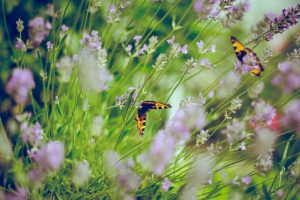Create a Parkstrip Like a Pro
 September is a wonderful time to plan your garden. At Glover Nursery we like to create what we call “parkstrips” for your yard. Parkstrips use local plants, are water wise and have varying elements to bring interest to your yard. Our friends at the Conservation Garden Park have put a series together on how best to create a parkstrip in your yard. We’ve included the first of their series below. Before you get into their articles here’s a list of our top 10 favorite plants to use in parkstrip landscaping.
September is a wonderful time to plan your garden. At Glover Nursery we like to create what we call “parkstrips” for your yard. Parkstrips use local plants, are water wise and have varying elements to bring interest to your yard. Our friends at the Conservation Garden Park have put a series together on how best to create a parkstrip in your yard. We’ve included the first of their series below. Before you get into their articles here’s a list of our top 10 favorite plants to use in parkstrip landscaping.
1. Agastache (Hummingbird Mint) – multiple varieties2. Oenothera (Primrose) – multiple varieties3. Gaillardia – multiple varieties4. Sedum – multiple varieties5. Blonde Ambition Gramma Grass6. Little Bunny Fountain Grass7. Shenandoah Switch Grass8. Bright Edge Yucca9. Streibs Findling Cotoneaster10. Apricot Drift Rose
And now, on to part 1 of Localscapes landscaping series.
The Central Open Shape
-
The Localscapes® approach is a series of landscaping elements and practices that fix common landscape challenges by taking Utah’s unique climate into account. Over the next few posts, we’ll look at each design consideration for the five elements of a Localscape. The first and defining element of a Localscape is the central open shape.The Central Open Shape
A Localscape begins with the placement of a central open shape to provide a focal point and create organization in the design. Too often, landscapes are created by designing the shapes of planting beds and then filling the remaining space with lawn. The end result is a haphazard landscape with lots of pain points and limited uses. Almost all landscapes are designed (or rather NOT designed) this way.
A Localscape® flips this method and creates a central open shape, most often lawn, that’s a planned, designed element in the landscape. Not only does the central open shape provide structure and order, it also creates an area that is easier to irrigate efficiently and only has one edge to maintain.
-
LayoutA central open shape can be rectangular (the most efficient to water) or free-form. If using curves, make sure they’re gentle and flowing rather than tight squiggles. This ensures more efficient watering and/or ease of mowing. Whatever size or shape your property is, there’s a shape that will fit well the spaces you have.As you try out different shapes on your design plan or by laying out a rope or hose in the landscape, try and match the contours of your landscape. Play around with different shapes until you get the one that fits the lot well but doesn’t have any areas less than 8 feet wide. 8-feet is the minimum width for sprinkler systems to work well.
-
MaterialsA central open shape can be made up of several materials depending on your lot size, needs, and personal aesthetic. Most Utahans choose lawn for the central open shape, but other materials can be used, like steppable groundcover (creeping thyme is a great example), or gravel or hardscaping if you want to go lawnless.
-
IrrigationIf you’re using lawn or groundcover, overhead spray irrigation will be the best way to water. Align sprinkler heads so that your system will have the head-to-head coverage needed but minimize overspray onto hard surfaces and planting beds—planting beds have completely different watering needs than lawn. Use mp rotator nozzles or those which apply water in heavier streams, reducing loss from wind and evaporation, and smart controllers, which regulate irrigation frequency based on current weather patterns.
-
Rules of Lawn
Lawn is the most common choice for the central open shape. There are certain limitations with lawn in our climate that we want to design around. Following the “Rules of Lawn” when creating your landscape will help you produce an end result that makes efficient use of your time, water and materials.
-
Localscapes can help you get a landscape that works for you and Utah. Check out the Localscapes website for more ideas, to download free plans or to sign up for one of the many classes being taught statewide. http://localscapes.com.
Other useful links and resources:

